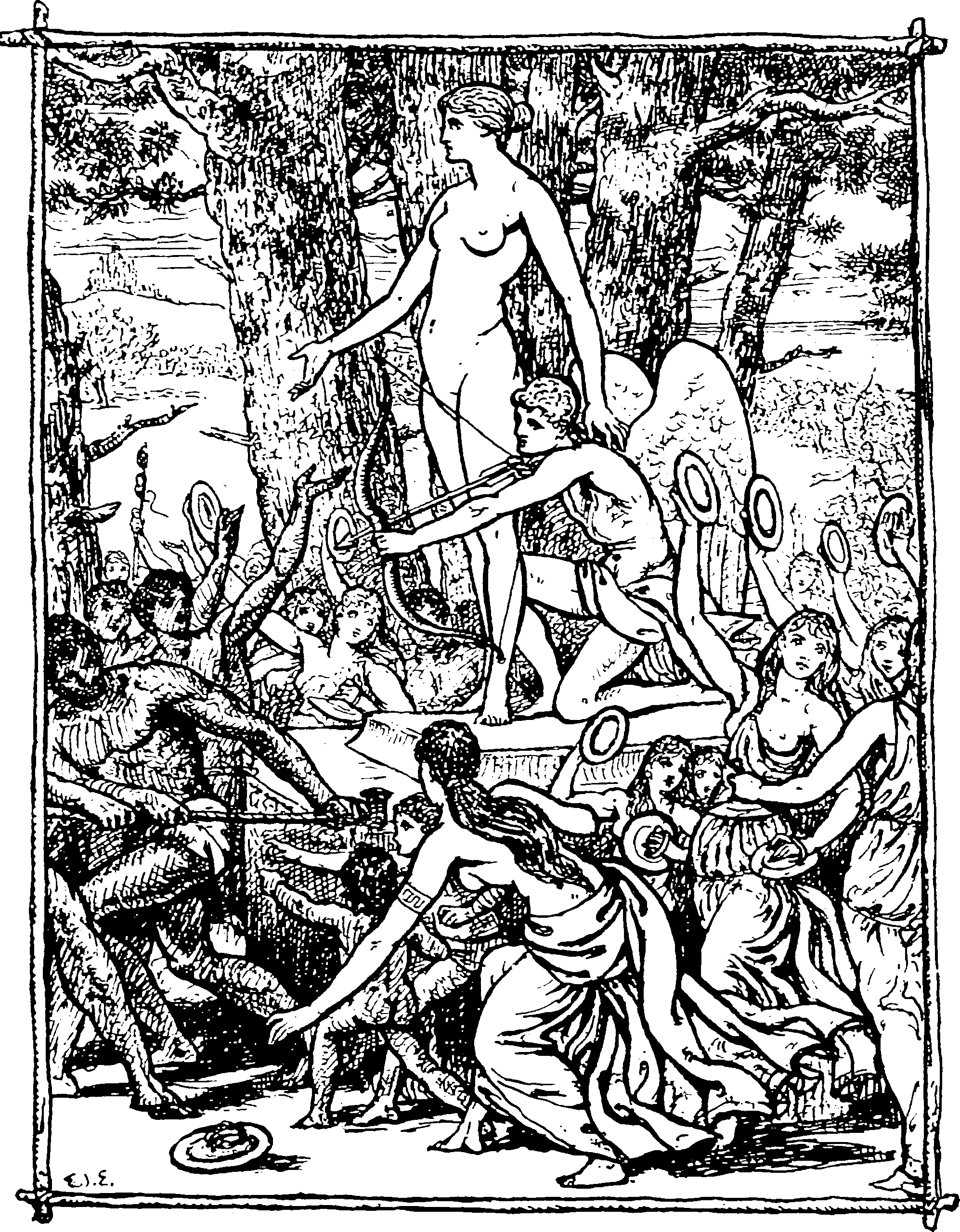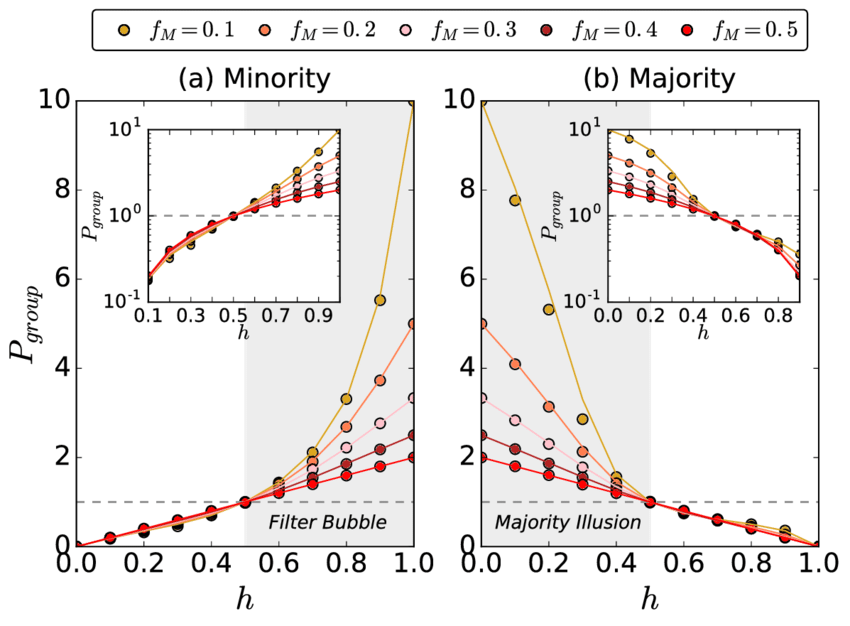Acemoglu, and Ozdaglar. 2011.
“Opinion Dynamics and Learning in Social Networks.” Dynamic Games and Applications.
Achlioptas, Clauset, Kempe, et al. 2005.
“On the Bias of Traceroute Sampling: Or, Power-Law Degree Distributions in Regular Graphs.” In
Proceedings of the Thirty-Seventh Annual ACM Symposium on Theory of Computing. STOC ’05.
Baker, Biazzo, Braunstein, et al. 2021.
“Epidemic Mitigation by Statistical Inference from Contact Tracing Data.” Proceedings of the National Academy of Sciences.
Bakshy, Rosenn, Marlow, et al. 2012.
“The Role of Social Networks in Information Diffusion.” In
Proceedings of the 21st International Conference on World Wide Web. WWW ’12.
Barbieri, Bonchi, and Manco. 2013.
“Cascade-Based Community Detection.” In
Proceedings of the Sixth ACM International Conference on Web Search and Data Mining. WSDM ’13.
Bonchi, Gullo, Mishra, et al. 2018.
“Probabilistic Causal Analysis of Social Influence.” In
Proceedings of the 27th ACM International Conference on Information and Knowledge Management. CIKM ’18.
Cai, Campbell, and Broderick. 2016.
“Edge-Exchangeable Graphs and Sparsity.” In
Proceedings of the 30th International Conference on Neural Information Processing Systems. NIPS’16.
Cha, Haddadi, Benevenuto, et al. 2010.
“Measuring User Influence in Twitter: The Million Follower Fallacy.” In
Fourth International AAAI Conference on Weblogs and Social Media.
Costello, Srivastava, Rejaie, et al. 2021.
“Predicting Mental Health From Followed Accounts on Twitter.” Collabra: Psychology.
Crane, and Dempsey. 2016.
“A Framework for Statistical Network Modeling.” arXiv:1509.08185 [Math, Stat].
———. 2018.
“Edge Exchangeable Models for Interaction Networks.” Journal of the American Statistical Association.
———. 2019.
“Relational Exchangeability.” Journal of Applied Probability.
Cranmer, Desmarais, and Morgan. 2021.
Inferential network analysis.
DiTraglia, Garcia-Jimeno, O’Keeffe-O’Donovan, et al. 2020.
“Identifying Causal Effects in Experiments with Social Interactions and Non-Compliance.” arXiv:2011.07051 [Econ, Stat].
Dodds, and Watts. 2005.
“A Generalized Model of Social and Biological Contagion.” Journal of Theoretical Biology.
Draves, and Sussman. 2020.
“Bias-Variance Tradeoffs in Joint Spectral Embeddings.” arXiv:2005.02511 [Math, Stat].
Gelman, and Margalit. 2021.
“Social Penumbras Predict Political Attitudes.” Proceedings of the National Academy of Sciences.
Goel, Anderson, Hofman, et al. 2015.
“The Structural Virality of Online Diffusion.” Management Science.
Gomez-Rodriguez, Leskovec, and Krause. 2012.
“Inferring Networks of Diffusion and Influence.” ACM Trans. Knowl. Discov. Data.
Goyal, Bonchi, and Lakshmanan. 2010.
“Learning Influence Probabilities in Social Networks.” In
Proceedings of the Third ACM International Conference on Web Search and Data Mining. WSDM ’10.
Goyal, Bonchi, and Lakshmanan. 2011.
“A Data-Based Approach to Social Influence Maximization.” In
Proc. VLDB Endow.
Greenland, and Robins. 2009.
“Identifiability, Exchangeability and Confounding Revisited.” Epidemiologic Perspectives & Innovations : EP+I.
Green, and Shalizi. 2017.
“Bootstrapping Exchangeable Random Graphs.” arXiv:1711.00813 [Stat].
Harris. 2013. An Introduction to Exponential Random Graph Modeling.
Hunter, Krivitsky, and Schweinberger. 2012.
“Computational Statistical Methods for Social Network Models.” Journal of Computational and Graphical Statistics.
Jackson, Matthew O. 2008. Social and Economic Networks.
Jackson, Matthew O. 2009.
“Social Structure, Segregation, and Economic Behavior.” Presented as the Nancy Schwartz Memorial Lecture.
Jaeger, and Schulte. 2021.
“A Complete Characterization of Projectivity for Statistical Relational Models.” In
Proceedings of the Twenty-Ninth International Joint Conference on Artificial Intelligence. IJCAI’20.
Kempe, Kleinberg, and Tardos. 2003.
“Maximizing the Spread of Influence Through a Social Network.” In
Proceedings of the Ninth ACM SIGKDD International Conference on Knowledge Discovery and Data Mining. KDD ’03.
Kiss, Miller, and Simon. 2017.
Mathematics of Epidemics on Networks: From Exact to Approximate Models. Interdisciplinary Applied Mathematics.
Kolaczyk, and Krivitsky. 2015.
“On the Question of Effective Sample Size in Network Modeling: An Asymptotic Inquiry.” Statistical Science : A Review Journal of the Institute of Mathematical Statistics.
Krivitsky, and Handcock. 2014.
“A Separable Model for Dynamic Networks.” Journal of the Royal Statistical Society: Series B (Statistical Methodology).
Laga, Bao, and Niu. 2020.
“Thirty Years of The Network Scale up Method.” arXiv:2011.12516 [Stat].
Lee, Karimi, Jo, et al. 2017.
“Homophily Explains Perception Biases in Social Networks.” arXiv:1710.08601 [Physics].
Lin, Lunde, and Sarkar. 2020.
“On the Theoretical Properties of the Network Jackknife.” arXiv:2004.08935 [Math, Stat].
Li, Qian, Levina, et al. 2020.
“High-Dimensional Gaussian Graphical Models on Network-Linked Data.” Journal of Machine Learning Research.
Liu, King, and Bearman. 2010.
“Social Influence and the Autism Epidemic.” American Journal of Sociology.
Madar, Kalisky, Cohen, et al. 2004.
“Immunization and Epidemic Dynamics in Complex Networks.” The European Physical Journal B.
Morozova, Cohen, and Crawford. 2018.
“Risk Ratios for Contagious Outcomes.” Journal of The Royal Society Interface.
Onnela, and Reed-Tsochas. 2010.
“Spontaneous Emergence of Social Influence in Online Systems.” Proceedings of the National Academy of Sciences.
Orbanz, and Roy. 2015.
“Bayesian Models of Graphs, Arrays and Other Exchangeable Random Structures.” IEEE Transactions on Pattern Analysis and Machine Intelligence.
Pastor-Satorras, Castellano, Van Mieghem, et al. 2015.
“Epidemic Processes in Complex Networks.” Reviews of Modern Physics.
Pastor-Satorras, and Vespignani. 2002.
“Immunization of Complex Networks.” Physical Review E.
Pattison, Robins, Snijders, et al. 2013.
“Conditional Estimation of Exponential Random Graph Models from Snowball Sampling Designs.” Journal of Mathematical Psychology, Social Networks,.
Pinto, and Chahed. 2014.
“Modeling Multi-Topic Information Diffusion in Social Networks Using Latent Dirichlet Allocation and Hawkes Processes.” In
Proceedings of the 2014 Tenth International Conference on Signal-Image Technology and Internet-Based Systems. SITIS ’14.
Salamanos, Voudigari, and Yannakoudakis. n.d.
“Deterministic Graph Exploration for Efficient Graph Sampling.” Social Network Analysis and Mining.
Sanguiao Sande, and Zhang. 2020.
“Design-Unbiased Statistical Learning in Survey Sampling.” Sankhya: The Indian Journal of Statistics.
Seshadhri, Sharma, Stolman, et al. 2020.
“The Impossibility of Low-Rank Representations for Triangle-Rich Complex Networks.” Proceedings of the National Academy of Sciences.
Sharma, Hofman, and Watts. 2015.
“Estimating the Causal Impact of Recommendation Systems from Observational Data.” Proceedings of the Sixteenth ACM Conference on Economics and Computation - EC ’15.
Snijders, Tom A. B. 2010.
“Conditional Marginalization for Exponential Random Graph Models.” The Journal of Mathematical Sociology.
Stewart, Arif, and Starbird. 2018. “Examining Trolls and Polarization with a Retweet Network.”
Stumpf, Wiuf, and May. 2005.
“Subnets of Scale-Free Networks Are Not Scale-Free: Sampling Properties of Networks.” Proceedings of the National Academy of Sciences of the United States of America.
Valente. 2012.
“Network Interventions.” Science.
Venkatasubramanian, Scheidegger, Friedler, et al. 2021.
“Fairness in Networks: Social Capital, Information Access, and Interventions.” In
Proceedings of the 27th ACM SIGKDD Conference on Knowledge Discovery & Data Mining. KDD ’21.
Watts. 2014.
“Common Sense and Sociological Explanations.” American Journal of Sociology.
Watts, and Dodds. 2007.
“Influentials, Networks, and Public Opinion Formation.” Journal of Consumer Research.
Yang, Long, Smola, et al. 2011.
“Like Like Alike: Joint Friendship and Interest Propagation in Social Networks.” In
Proceedings of the 20th International Conference on World Wide Web. WWW ’11.
Yannakoudakis, Voudigari, and Salamanos. 2020.
“Identifying Influential Spreaders by Graph Sampling.” Salamanos N, Voudigari E, Yannakoudakis EJ (2016) Identifying Influential Spreaders by Graph Sampling. In: Proceedings of the 5th International Workshop on Complex Networks and Their Applications, Milan, Italy, November 30 - December 02, 2016.
Zafarani, Abbasi, and Liu. 2014. Social Media Mining: An Introduction.
Zarezade, Upadhyay, Rabiee, et al. 2017.
“RedQueen: An Online Algorithm for Smart Broadcasting in Social Networks.” In
Proceedings of the Tenth ACM International Conference on Web Search and Data Mining. WSDM ’17.
Zhang, Li-Chun, and Oguz-Alper. 2020.
“BIG Sampling.” arXiv:2003.09467 [Math, Stat].
Zhang, L.-C., and Patone. 2017.
“Graph Sampling.” METRON.
Zheleva, and Arbour. 2021.
“Causal Inference from Network Data.” In
Proceedings of the 27th ACM SIGKDD Conference on Knowledge Discovery & Data Mining. KDD ’21.
Zhou, Hofmann, and Schölkopf. n.d. “Semi-Supervised Learning on Directed Graphs.”


